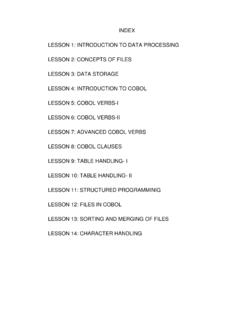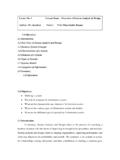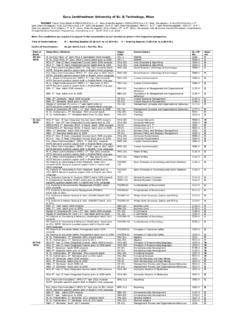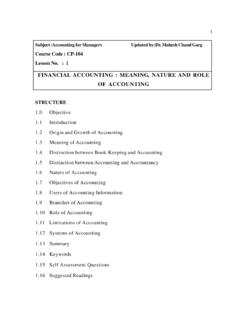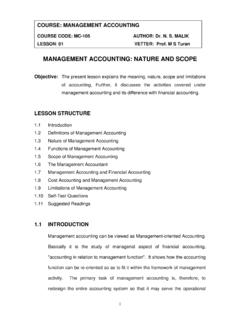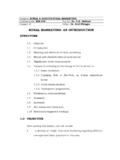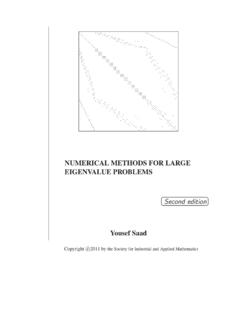Transcription of AN INTRODUCTION TO BUSINESS STATISTICS
1 1 OBJECTIVE: The aim of the present lesson is to enable the students to understand the meaning, definition, nature, importance and limitations of STATISTICS . A knowledge of STATISTICS is like a knowledge of foreign language of algebra; it may prove of use at any time under any circumstance ..Bowley. STRUCTURE: INTRODUCTION Meaning and Definitions of STATISTICS Types of Data and Data Sources Types of STATISTICS Scope of STATISTICS Importance of STATISTICS in BUSINESS Limitations of STATISTICS Summary Self-Test Questions Suggested Readings INTRODUCTION For a layman, STATISTICS means numerical information expressed in quantitative terms. This information may relate to objects, subjects, activities, phenomena, or regions of space.
2 As a matter of fact, data have no limits as to their reference, coverage, and scope. At the macro level, these are data on gross national product and shares of agriculture, manufacturing, and services in GDP (Gross Domestic Product). SUBJECT: BUSINESS STATISTICS COURSE CODE: MC-106 AUTHOR: SURINDER KUNDU LESSON: 01 VETTER: DR. B. S. BODLA AN INTRODUCTION TO BUSINESS STATISTICS 2At the micro level, individual firms, howsoever small or large, produce extensive STATISTICS on their operations. The annual reports of companies contain variety of data on sales, production, expenditure, inventories, capital employed, and other activities. These data are often field data, collected by employing scientific survey techniques.
3 Unless regularly updated, such data are the product of a one-time effort and have limited use beyond the situation that may have called for their collection. A student knows STATISTICS more intimately as a subject of study like economics, mathematics, chemistry, physics, and others. It is a discipline, which scientifically deals with data, and is often described as the science of data. In dealing with STATISTICS as data, STATISTICS has developed appropriate methods of collecting, presenting, summarizing, and analysing data, and thus consists of a body of these methods. MEANING AND DEFINITIONS OF STATISTICS In the beginning, it may be noted that the word STATISTICS is used rather curiously in two senses plural and singular.
4 In the plural sense, it refers to a set of figures or data. In the singular sense, STATISTICS refers to the whole body of tools that are used to collect data, organise and interpret them and, finally, to draw conclusions from them. It should be noted that both the aspects of STATISTICS are important if the quantitative data are to serve their purpose. If STATISTICS , as a subject, is inadequate and consists of poor methodology, we could not know the right procedure to extract from the data the information they contain. Similarly, if our data are defective or that they are inadequate or inaccurate, we could not reach the right conclusions even though our subject is well developed. Bowley has defined STATISTICS as: (i) STATISTICS is the science of counting, (ii) STATISTICS may rightly be called the science of averages, and (iii) STATISTICS is the science of measurement of social organism regarded as a whole in all its mani- 3festations.
5 Boddington defined as: STATISTICS is the science of estimates and probabilities. Further, King has defined STATISTICS in a wider context, the science of STATISTICS is the method of judging collective, natural or social phenomena from the results obtained by the analysis or enumeration or collection of estimates. Seligman explored that STATISTICS is a science that deals with the methods of collecting, classifying, presenting, comparing and interpreting numerical data collected to throw some light on any sphere of enquiry. Spiegal defines STATISTICS highlighting its role in decision-making particularly under uncertainty, as follows: STATISTICS is concerned with scientific method for collecting, organising, summa rising, presenting and analyzing data as well as drawing valid conclusions and making reasonable decisions on the basis of such analysis.
6 According to Prof. Horace Secrist, STATISTICS is the aggregate of facts, affected to a marked extent by multiplicity of causes, numerically expressed, enumerated or estimated according to reasonable standards of accuracy, collected in a systematic manner for a pre-determined purpose, and placed in relation to each other. From the above definitions, we can highlight the major characteristics of STATISTICS as follows: (i) STATISTICS are the aggregates of facts. It means a single figure is not STATISTICS . For example, national income of a country for a single year is not STATISTICS but the same for two or more years is STATISTICS . (ii) STATISTICS are affected by a number of factors. For example, sale of a product depends on a number of factors such as its price, quality, competition, the income of the consumers, and so on.
7 4(iii) STATISTICS must be reasonably accurate. Wrong figures, if analysed, will lead to erroneous conclusions. Hence, it is necessary that conclusions must be based on accurate figures. (iv) STATISTICS must be collected in a systematic manner. If data are collected in a haphazard manner, they will not be reliable and will lead to misleading conclusions. (v) Collected in a systematic manner for a pre-determined purpose (vi) Lastly, STATISTICS should be placed in relation to each other. If one collects data unrelated to each other, then such data will be confusing and will not lead to any logical conclusions. Data should be comparable over time and over space. TYPES OF DATA AND DATA SOURCES Statistical data are the basic raw material of STATISTICS .
8 Data may relate to an activity of our interest, a phenomenon, or a problem situation under study. They derive as a result of the process of measuring, counting and/or observing. Statistical data, therefore, refer to those aspects of a problem situation that can be measured, quantified, counted, or classified. Any object subject phenomenon, or activity that generates data through this process is termed as a variable. In other words, a variable is one that shows a degree of variability when successive measurements are recorded. In STATISTICS , data are classified into two broad categories: quantitative data and qualitative data. This classification is based on the kind of characteristics that are measured.
9 Quantitative data are those that can be quantified in definite units of measurement. These refer to characteristics whose successive measurements yield quantifiable observations. Depending on the nature of the variable observed for measurement, quantitative data can be further categorized as continuous and discrete data. 5 Obviously, a variable may be a continuous variable or a discrete variable. (i) Continuous data represent the numerical values of a continuous variable. A continuous variable is the one that can assume any value between any two points on a line segment, thus representing an interval of values. The values are quite precise and close to each other, yet distinguishably different.
10 All characteristics such as weight, length, height, thickness, velocity, temperature, tensile strength, etc., represent continuous variables. Thus, the data recorded on these and similar other characteristics are called continuous data. It may be noted that a continuous variable assumes the finest unit of measurement. Finest in the sense that it enables measurements to the maximum degree of precision. (ii) Discrete data are the values assumed by a discrete variable. A discrete variable is the one whose outcomes are measured in fixed numbers. Such data are essentially count data. These are derived from a process of counting, such as the number of items possessing or not possessing a certain characteristic.
